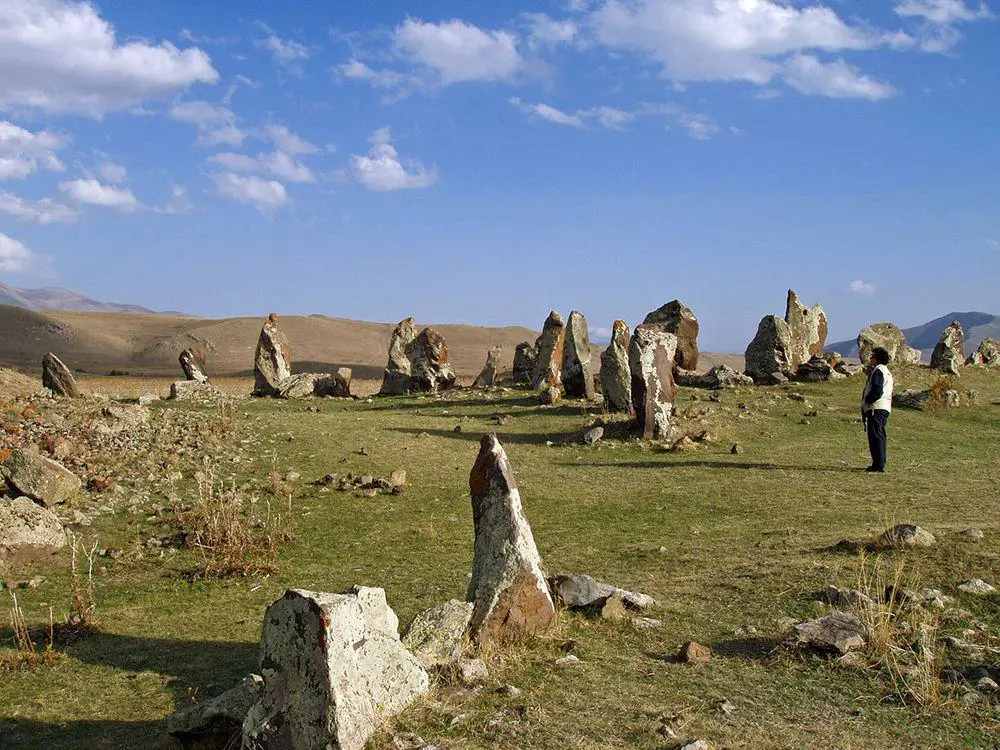Wondermondo 🢖 World 🢖 Wonders of Asia 🢖 Wonders of Armenia
Territory
Wonders of Armenia
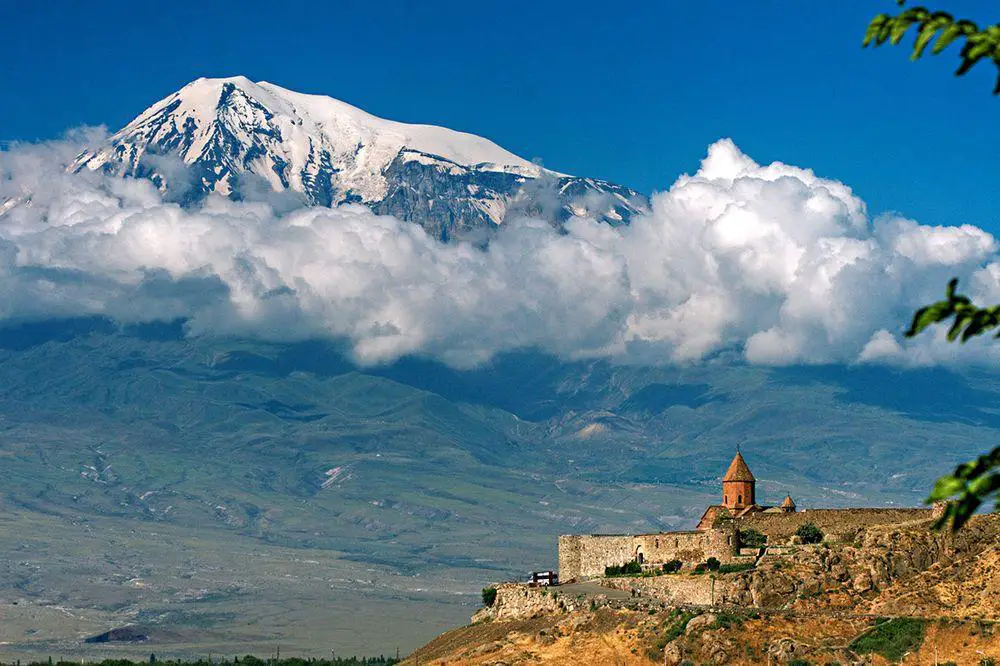
 Highlights
Highlights
In spite of its small size, Armenia has quite a few surprising landmarks. Highlights of this country are:
- Some of the oldest churches and Christian monasteries in the world. The oldest state-built cathedrals and churches are found in Armenia – this was the first country to adopt Christianity in 301 AD and soon after there were built the first large churches, basing on older construction and art traditions. The first and most important is Etchmiadzin Cathedral, originally built in 303 AD, rebuilt in 484 AD.
- Archaeological heritage, mainly – cyclopean fortresses, mysterious megaliths, and cliff carvings. Most of the world was primitive when in Armenia were domesticated animals and cultivated plants, used metals, and writing. Here is found the oldest winery in the world (more than 6,000 years!) and the oldest shoe in the world. Rather many archaeological landmarks have unclear meaning – we don’t know why these were built (Ujan gates) and even – how it was possible to make them (e.g. "Ladder to the sky").
Map with the described wonders
If you see this after your page is loaded completely, leafletJS files are missing.
 Top 25 wonders of Armenia
Top 25 wonders of Armenia
Geological wonders
Jermuk falls
Vayots Dzor
68 m tall waterfall of thermal, mineral-rich water. Water is sliding down along travertine formations.
Archaeological wonders
Garni temple
Kotayk
Hellenistic temple in the prehistoric Garni fortress. Temple most likely was built in the 1st century AD by Tiridates I of Armenia. Reconstructed in 1969 – 1975.
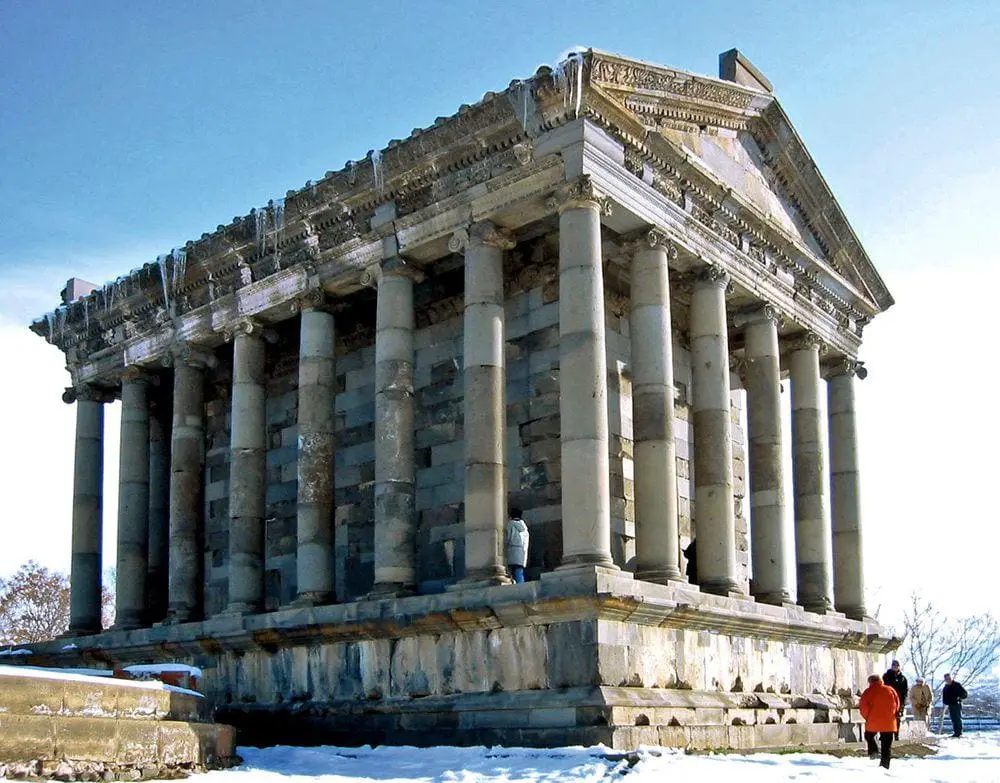
Oshakan Tukh Manuk shrine
Aragatsotn
One of the shrines of the popular cult of Tukh Manuk that united Christianity and paganic beliefs. Now in ruins.
Vishap of Aragats
Aragatsotn
Approximately 3 m tall standing stone that was erected in Neolithic Age, some 5,000 years ago. According to legends, this is a guardian of Kari lake.
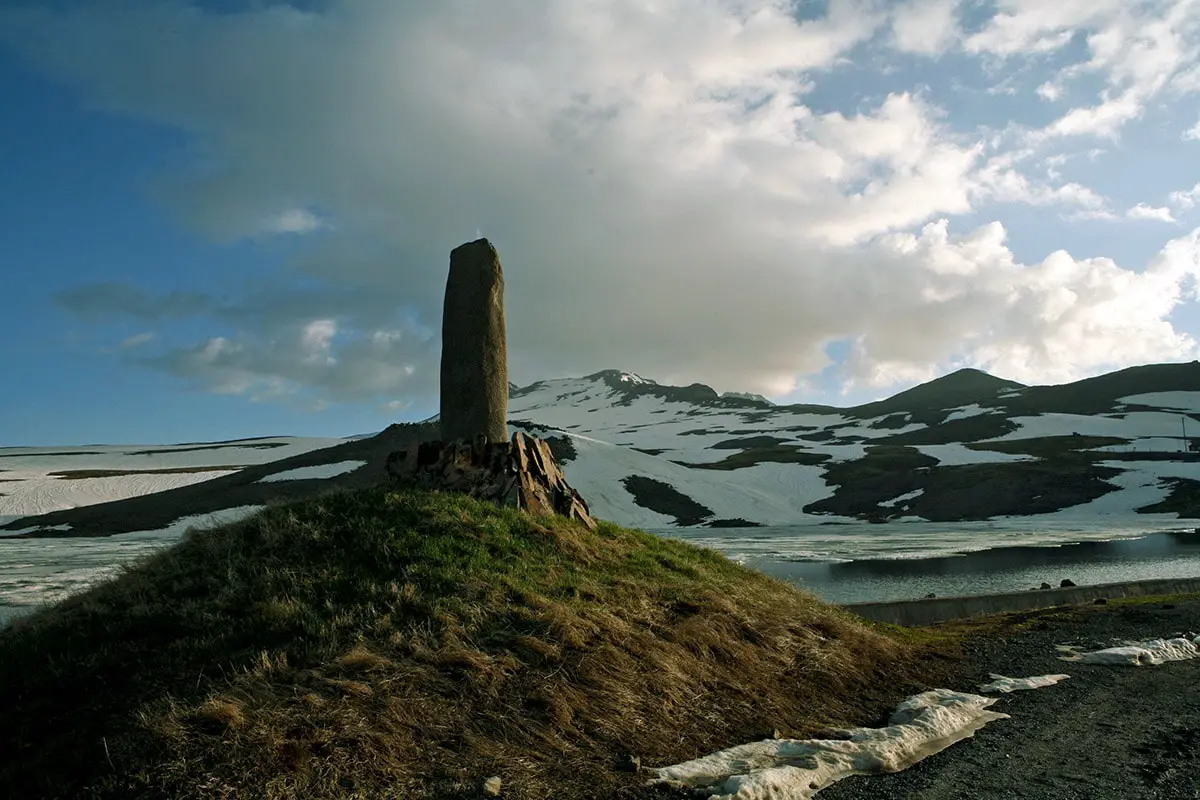
Dvin
Ararat
Location of the early capital of Armenia, built by Khosrov III in 335 AD. The city had up to 100,000 inhabitants, which gradually declined after the earthquake in 893 AD. Contains ruins of a church from the 4th century.
Ughtasar petroglyphs (Ukhtasar)
Syunik
Rocks with numerous prehistoric engravings – goats, deer, mouflons, horses. Created in the 5th – 4th century BC and the 3rd – 2nd century BC, but the oldest could be from the 6th millennia BC.
Karahunj (Zorats Karer)
Syunik
Megalithic necropolis from the 3rd – 2nd millennia BC (?). Contains a ring of upright stones. Some 223 stone tombs are here, from the Middle Bronze Age to Iron Age. Many stones have holes in them and there is a hypothesis that these holes were used in ancient astronomy.
Architecture wonders
Tatev Monastery
Syunik
This monastery was established in the 9th century and is located on the rim of the canyon, in the site of the former pagan cult site. In the 14th – 15th century here operated Tatev university. Sts. Paul and Peter Cathedral was built between 895 and 906 AD, ornamented with murals in 930. Monastery has also a pendulous column (Gavazan Siun) that warns about earthquakes.
Geghard Monastery
Kotayk
A unique structure, it is partially carved into an adjacent cliff and richly ornamented. It was founded in the 4th century.
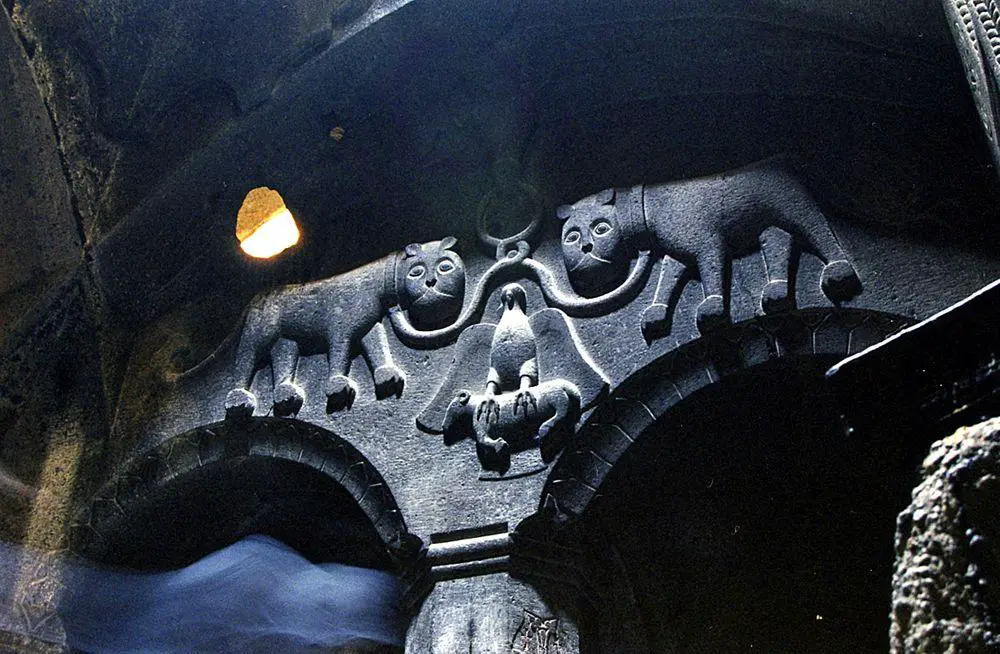
Etchmiadzin Cathedral
Armavir
Centre of Armenian Apostolic Church. Initially built in 303 AD, and rebuilt in 483, the world’s oldest cathedral.
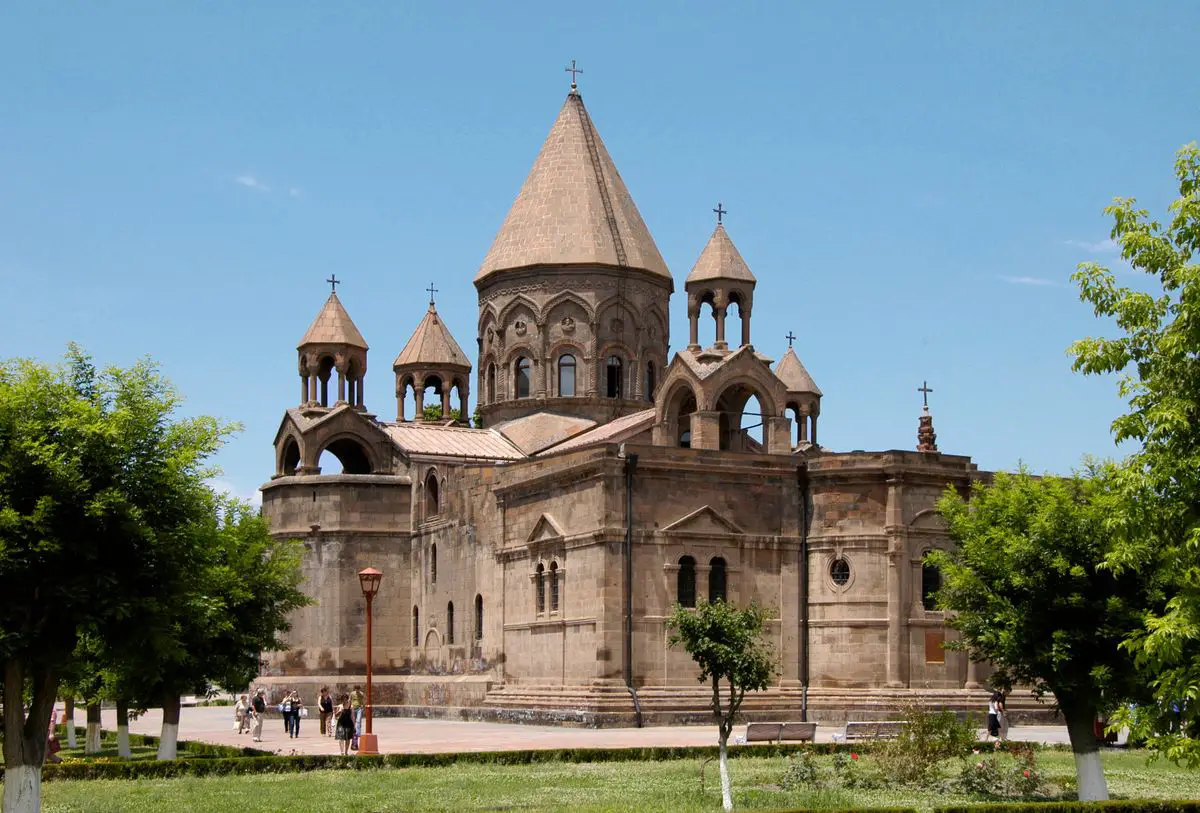
Khndzoresk cave settlement and Stone pyramids of Gori (Old Goris)
Syunik
Ancient village in the river canyon. In the cliffs have been formed numerous artificial caves – houses that were inhabited until the 1950s. Each apartment has a door, window, and oven. Doors are some 4 – 5 m above the ground.
Sevanavank
Gegharkunik
A monastery at the shores of Sevan (originally – on an island), established in 874 AD. Best preserved are two churches – some of the most picturesque Armenian churches with Lake Sevan as a magnificent backdrop.
Matenadaran
Yerevan
One of the largest collections of medieval manuscripts in the world, mostly in the Armenian language. The collection has almost 17,000 manuscripts and a huge number of other documents.
Haghpat Monastery
Lori
This monastery was established in the 10th century and contains unique architecture and art values – including some of the best and most intricate stone carvings. One of the oldest buildings here is St. Nishan church, originally built in 966 – 967, later extended and rebuilt.
Goshavank Monastery
Tavush
An old monastery, established in the 12th – 13th century. Consists of a group of beautiful churches and other buildings. A special value of the monastery is a collection of some of the most intricate stone carvings in the world – several outstanding khachkars, including the famous Needlework khachkar from 1291, created by Poghos.
Saint Gayane Church
Armavir
A very old church, built in 630 AD, and little changed since then.
Sanahin Monastery
Lori
A very old monastery, established in the 10th century. The old buildings are adorned with intricate stone carvings.
Zvartnots Cathedral
Armavir
Ruins of a cathedral that was built in 641 – 653 AD. According to some reconstructions this building initially had a bold design – it was three floors high rotunda.
Noravank Monastery
Vayots Dzor
Group of architecturally interesting buildings, built mostly in the 13th century. Especially interesting is the Surp Astvatsatsin (Holy Mother of God) church with outer stairway leading to the second floor.
Khor Virap monastery
Ararat
A very old monastery. The chapel was built here already in 642 AD. Important historical site close to Ararat mountain (now in Turkey).
Saint Hripsime Church
Armavir
One of oldest churches in Armenia, built in 395 – 618 AD. This important monument of architecture to some extent defined traditional Armenian architecture. This church was constructed over a prehistoric cult site.
Harichavank Monastery
Shirak
A beautiful historical monastery, established on the site of a prehistoric hillfort in the 7th century AD or earlier. The main building is the impressive Church of the Holy Mother of God from 1201 with interesting architectural details.
Haghartsin Monastery
Tavush
A small monastery, built in a forested mountain valley in the 10th – 14th century. Contains St. Astvatsatsin church, built in 1281. Renovated.
Amberd fortress
Aragatsotn
Impressive mountaintop fortress, built in the 7th century AD. Located on the site of a Stone Age settlement. Abandoned in 1236.
Gandzasar monastery
Yukhari-Karabakh
This Armenian monastery developed in the 13th century. Now, this is an extensive complex of old buildings behind protection walls. Church (Gandzasar Cathedral of St. John the Baptist) was built in 1216 – 1238 and is one of the most prominent achievements in Armenian medieval architecture.
 Recommended books
Recommended books
Historic Armenia After 100 Years: Ani, Kars and the Six Provinces of Western Armenia
In the groundbreaking new book HISTORIC ARMENIA AFTER 100 YEARS, author Matthew Karanian celebrates the Armenia that has avoided destruction: its monuments, churches, and people– the hidden Armenians who have persevered in the face of persecution.
Armenia and Karabakh: The Stone Garden Travel Guide
This is the only travel book on Armenia that is truly an “insider’s guide.” This is because its author Matthew Karanian, and its photographer Robert Kurkjian, have each lived, worked, and traveled throughout the region for nearly two decades. They spent year after year researching and updating this edition. As a result of their time spent, all of the travel research in this book is original, and when the book recommends a site or suggests a travel route, it’s because the authors have actually been there and know what’s worth seeing and what’s worth avoiding.

